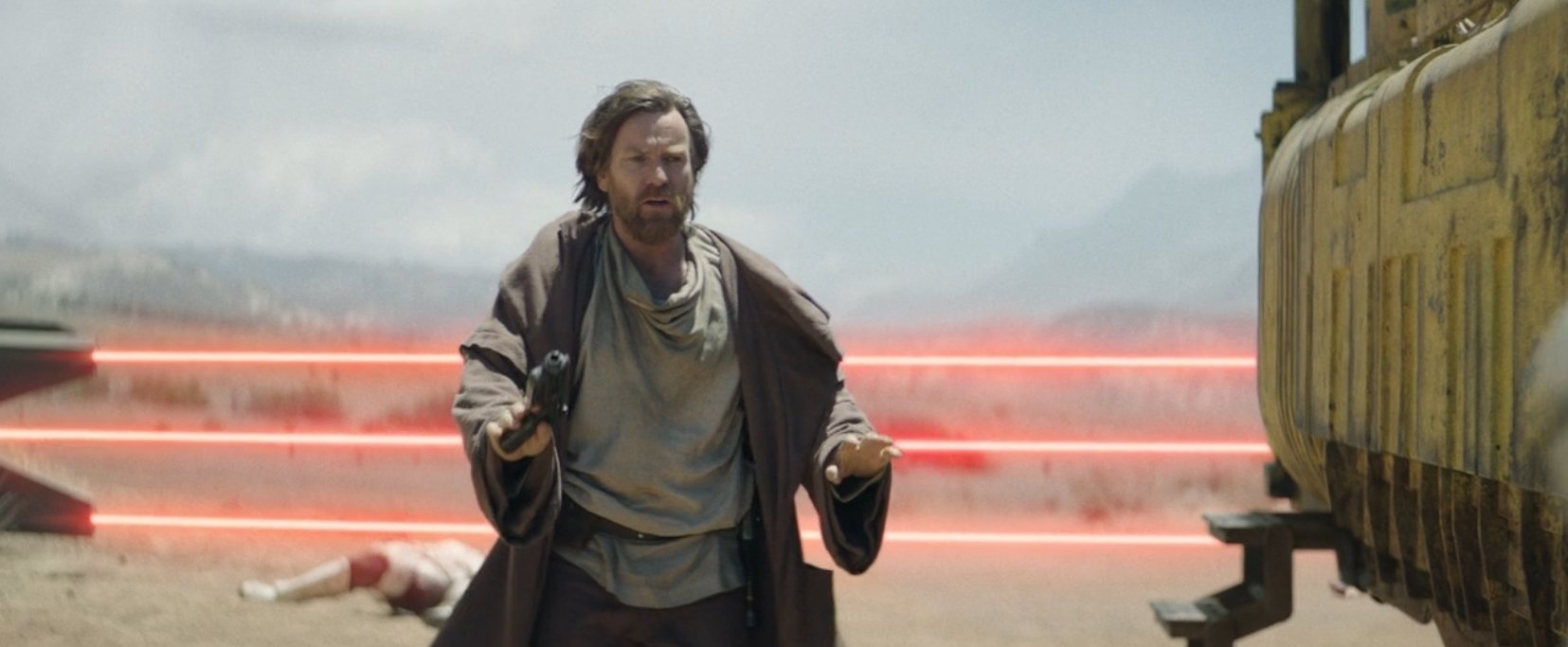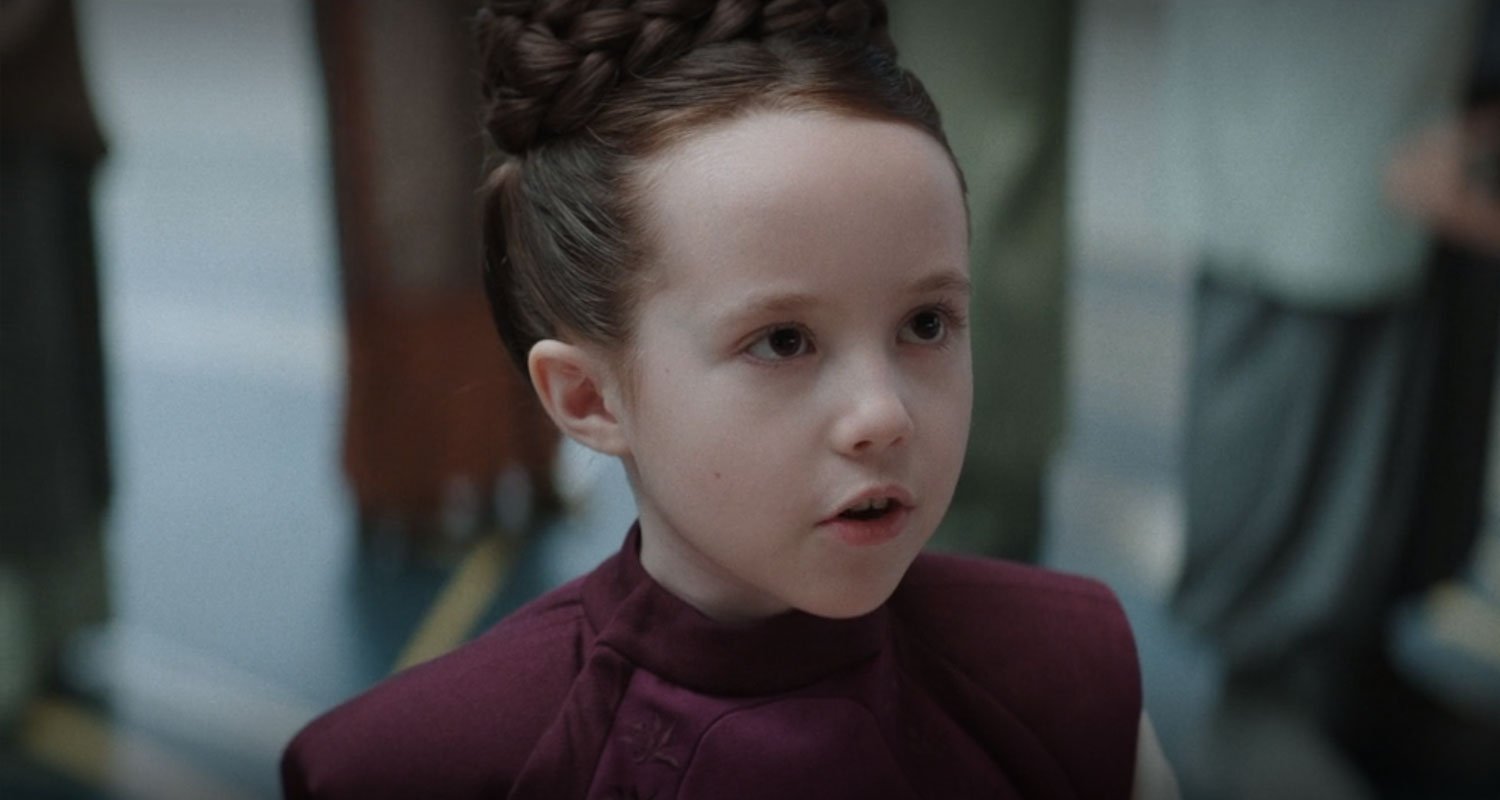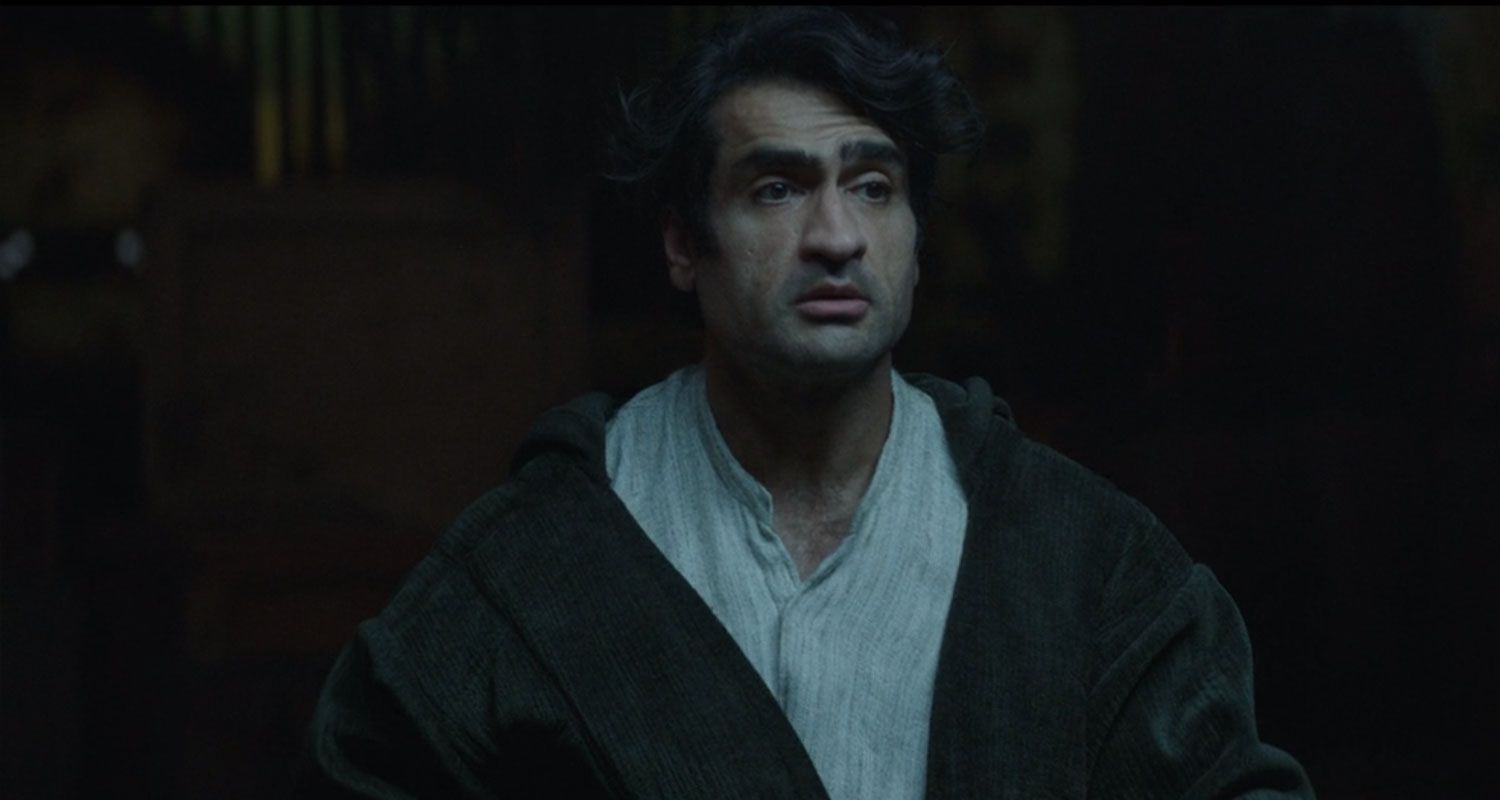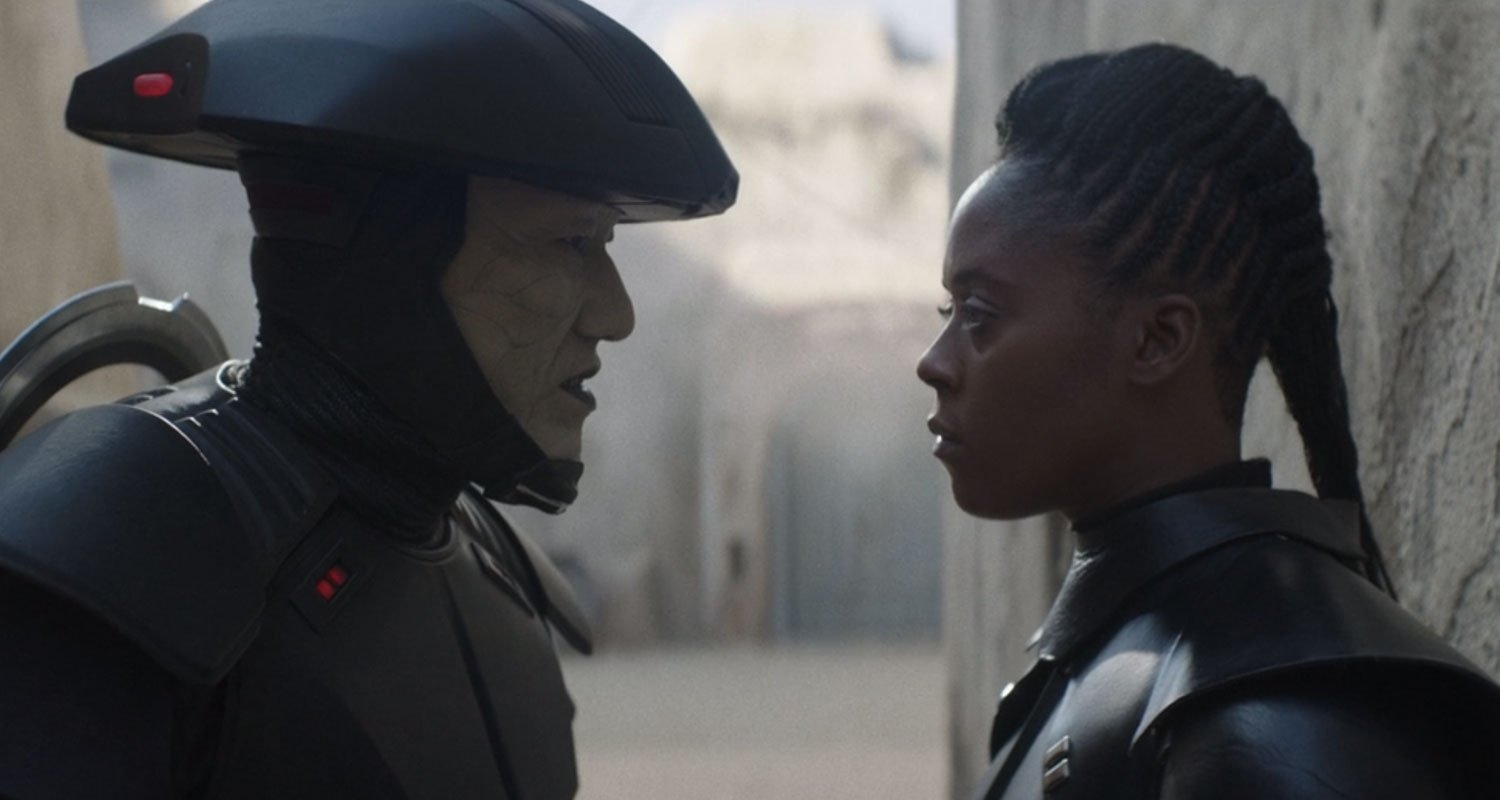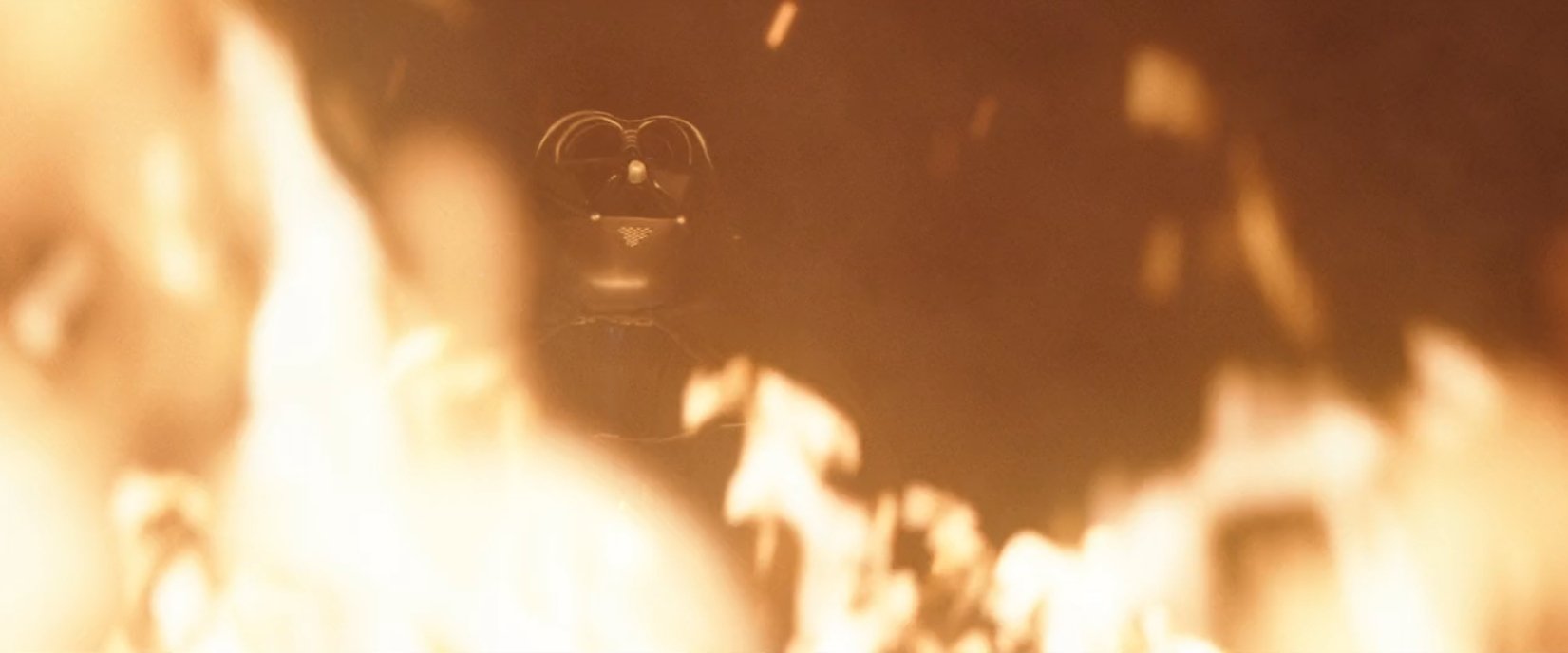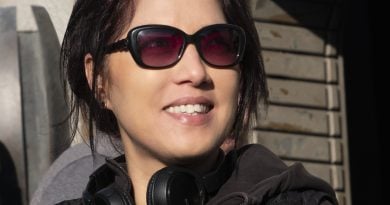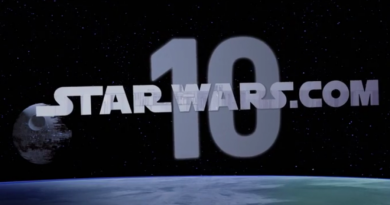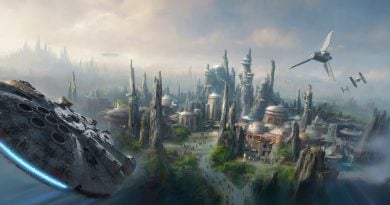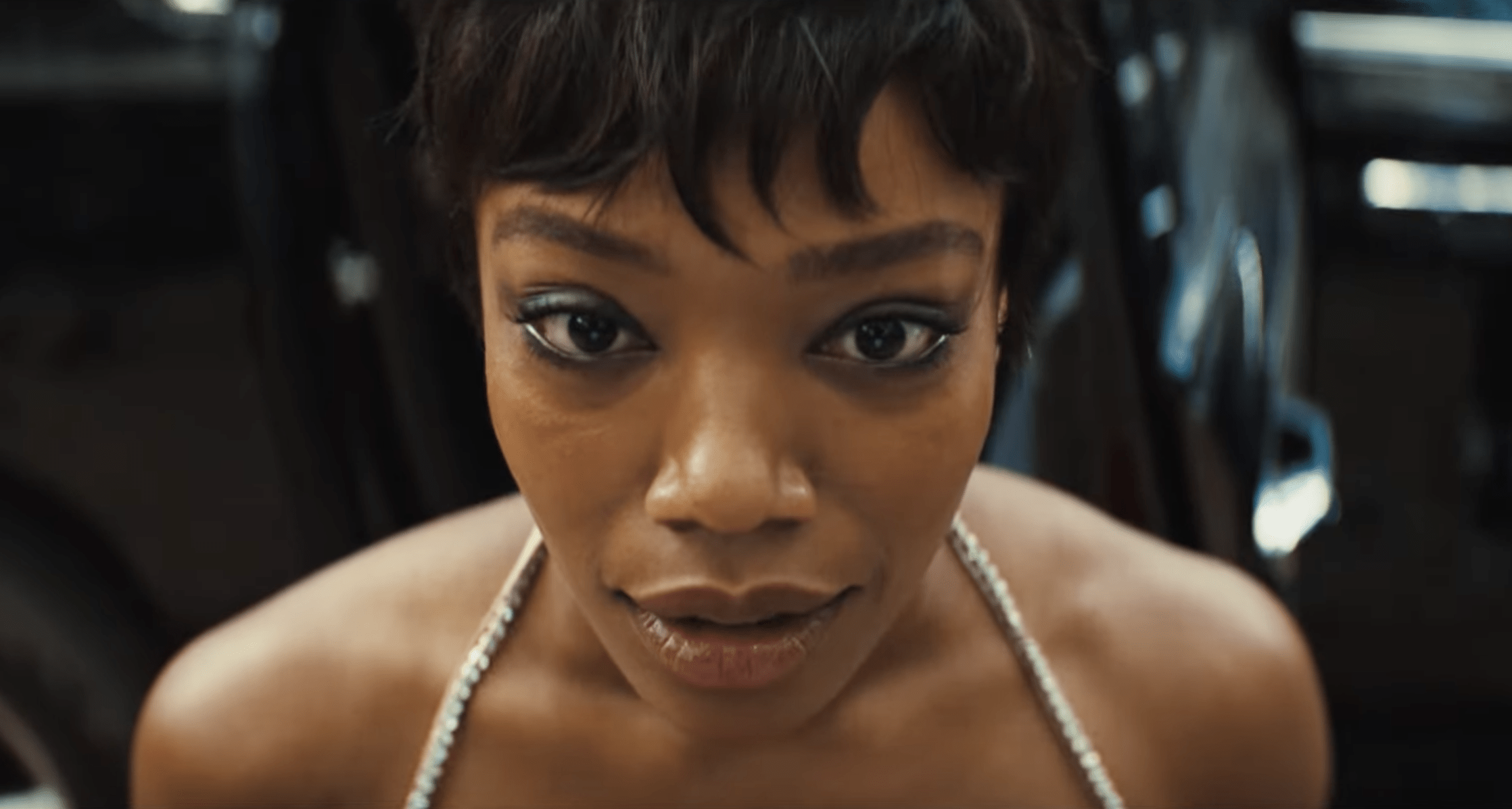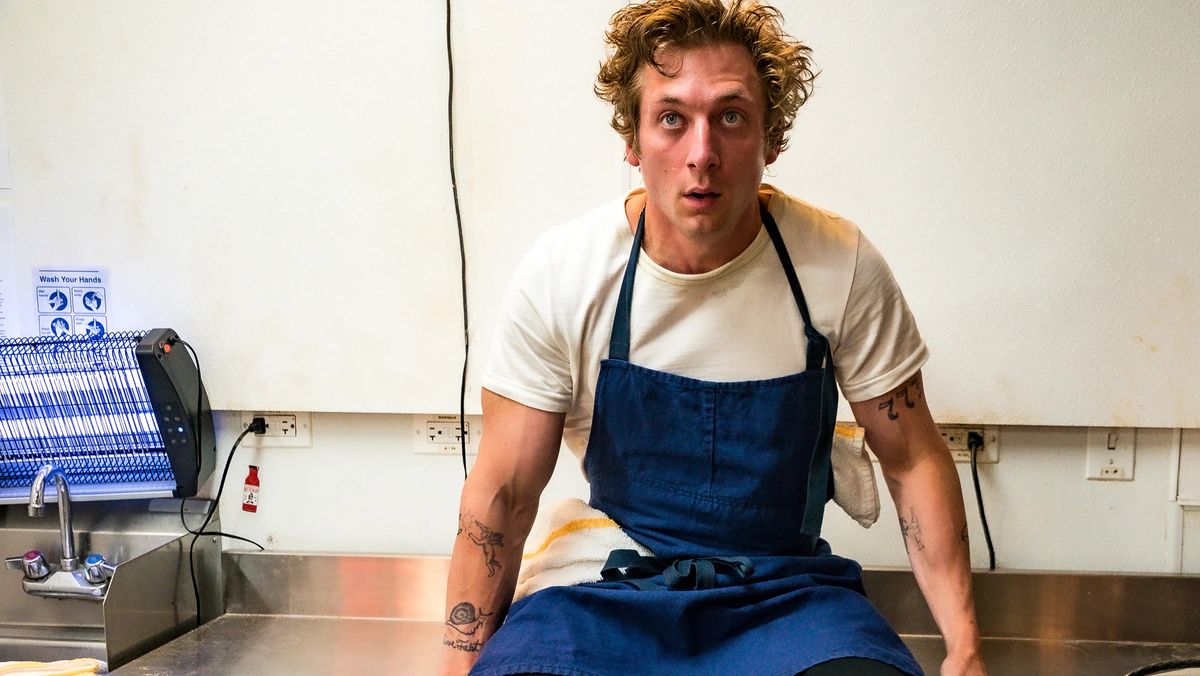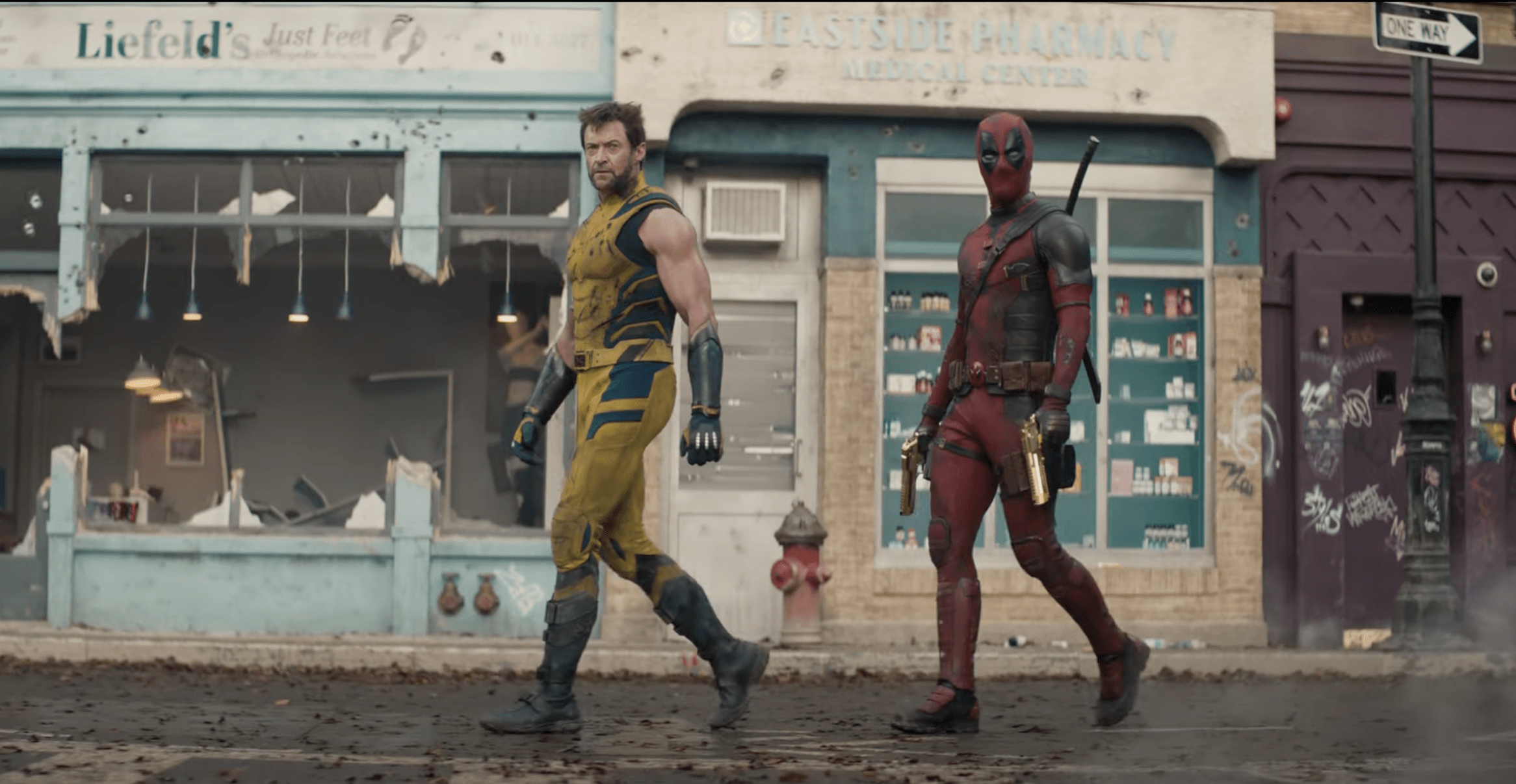‘Obi-Wan Kenobi’ Writer Joby Harold Reflects on First Half of the Series
Joby Harold, one of the main writers and executive producers behind Obi-Wan Kenobi, has spoken with Vanity Fair to answer some of the many questions fans have had with the first half of the limited event series and reflects on some of the show’s biggest moments so far. (Unmarked spoilers for the first three episodes of the series ahead!)
In a new interview piece from Anthony Breznican, a number of topics were covered about the series, which finds Obi-Wan Kenobi (Ewan McGregor) on a quest to rescue a young Leia Organa (Vivien Lyra Blair) from the Inquisitors, a mission that puts him on a journey to face off against Darth Vader (Hayden Christensen and James Earl Jones). Harold has indicated that patience in seeing the full story play out is key, as some questions will answer themselves — although he was more than happy to talk about some of the creative decisions they’ve made so far with the series. To start with, Harold explained that he knew that something important had to take Obi-Wan off of Tatooine, and it was decided early on that a 10-year-old Leia being endangered would drive the story. Harold was also thrilled with the response to Leia’s introduction with the crowd that saw the premiere at Star Wars Celebration Anaheim:
“Obviously, to bring Obi-Wan out of hiding there has to be a pretty good reason for him to leave Luke. Putting that question on the board – what would be seismic enough to make him do so? – acknowledges the importance of the Luke/Leia equation that sometimes has been forgotten. Why is Obi-Wan watching one of them, and not the other? …Having her be the call to action made her important legacy-wise at a young age, as important as the farm boy was. It was a great opportunity to surprise the audience… I wasn’t sure how the audience would embrace it until [the premiere screening] at Celebration, when we cut to Alderaan and the room lost its mind. It was so nice to see that they really enjoyed the notion of seeing this character in a more nascent form.”
As for the character’s “more nascent form”, an aspect that the series has repeatedly pointed out is that Obi-Wan sees both Anakin and Padmé in both of the Skywalker children. A recurring theme in Star Wars is that your adoptive family form as much a role in making you who you are as a biological family — and in an interesting twist, it now seems as though Obi-Wan is a crucial part of Leia’s upbringing. Harold explained that writing Leia began from a familiar place before expanding to the characters connected to her:
“The [goal] was to craft the character in such way that honored what Carrie Fisher had done. But also you got to play a little bit of the nature/nurture question, where you see she’s the best of her mother and her father, but you also get to get to see her adopted parents and how they have formed who she becomes too. She’s very much a byproduct of all those people. And we’re getting to see the untold story of how Obi-Wan was a part of her growing up too. That now informs “Help me, Obi-Wan Kenobi, you’re my only hope.” It helps explain why she would call her son “Ben” one day. There are lovely pieces of the puzzle that are now complete, that we didn’t even know needed to be completed.”
The conversation shifted to a darker place in discussing the backdrop of the series, following the genocide of the Jedi that began with Order 66 in Revenge of the Sith, a moment that the series revisits in its opening moments. Although this ground was recently covered in The Book of Boba Fett, during a flashback scene with Grogu, Harold explains that they needed to revisit it for the sake of the story and as a means to explore the depth of Obi-Wan’s pain, before putting him on a path of regaining hope:
“It was a necessary part of Obi-Wan’s story. It belonged in a story about a Jedi who is in hiding, who has to face his past… The stakes are high for everyone, right from the beginning, and then they become higher and higher and higher with Obi-Wan being forced to go out and be exposed, to be more in the spotlight because of the Leia of it all… I fought very hard [to show Obi-Wan in a depressed state]. There were some who say Jedi would never give up hope and would never say the time that the Jedi is done, but it was very important to me that the audience felt that. Hope is a big word in Star Wars. You don’t want to take it for granted as a precursor to existence as a Jedi. The notion that he would find it, even if it’s the smallest glimmer of it, on his journey and have it reignite, which is part of what Episode Three is when he meets [Indira Varma’s character] Tala, and learns of The Path and that he’s not alone. If he began in a place of feeling at peace and centered, those things wouldn’t have landed in the same way.”
The Obi-Wan that we’ve seen in this series is one who is very cautious, only using the Force or his lightsaber when he absolutely needs to, even while on the run from the Empire. Harold explained that this was an important aspect to keep in mind while doing the series, and that Leia being in danger had to be an important moment as Obi-Wan’s first onscreen use of the Force in the series. In addition, he also noted that it was a means to establish Kumail Nanjiani’s Haja Estree as a huckster:
“I heard something that J. J. Abrams had said ages ago: “It should be a massive moment when a Jedi uses the Force.” So you can’t ever throw it away. That really sat with me. You really have to earn the moment. He shouldn’t just use it to pull his cup of coffee closer while he’s sitting in the cave. Only Leia could pull that out of him… Only a fake Jedi would throw it away on shutters and nonsense like that. It’s funny watching that scene at Celebration too, because I know the character so well, but the audience didn’t. You could feel it in the room – “Are you just doing a really bad job with this Jedi?” – before they realized what was going on. I love that character. Having a fake Jedi felt like such a fun thing to add to the vocabulary of Star Wars. The guy is completely full of it, using a bunch of magnets and nonsense. But I love that character.”
On the other end of the Force spectrum, you have the Inquisitors, with Reva getting the greatest amount of emphasis as a hunter most actively seeking out Obi-Wan Kenobi. Harold cited a moment where she slices a hand off of a bystander who speaks out of cue as a moment that he feels illustrates who the character is:
“[Reva is] so brilliantly performed by Moses Ingram. Defining how singular of purpose she is through action and not just through monologuing was really important. It’s having her be unpredictable, having her choices be sudden… It feels so sudden and immediate and speaks to Reva always impatiently wanting to push the agenda and wanting to achieve her goal.”
Reva’s plan to kidnap Leia is a bold, brash move that earns her scorn from her fellow Inquisitors and is something that neither Emperor Palpatine nor Darth Vader considered doing. Harold explains that this move has a lot to do with how the Empire is keeping up appearances of being a more orderly body of government to the general public after the Clone Wars as opposed to looking like an authoritarian state. Furthermore, he also noted that Reva’s decision to break protocol to investigate a possible link between Obi-Wan Kenobi and Bail Organa demonstrates her impulsiveness compared to her peers:
“The Empire is in control, but they are a body that exists within the day to day life of the citizens of the galaxy. Many people believe they are doing what has to be done. There are people that sympathize with and believe in them. The Inquisitors aren’t acting like renegade hot shots, cruising around going against the wishes of the Empire. Reva’s unpredictability isn’t consistent with their operating procedure. Certainly going after a senator’s daughter is very much off limits. Reva’s discovery of the potency of the relationship between Bail and Obi-Wan, and taking advantage of that is certainly not within the playbook… We established her as being more impulsive, more committed to her own personal goals, so it felt like we created enough room for her character to push further than they would.”
Speaking of Reva’s impulsiveness, what’s up with her stabbing the Grand Inquisitor (Rupert Friend) and leaving him for dead, when he’s shown as being alive in the first season of Star Wars Rebels? Joby Harold says we’re just going to have to see how that plays out, but they know what they’re doing, and the series will stay in line with what Rebels has established:
“As you know, we would never break canon. So, that’s all I’ll say. [Laughs.] Canon is everything. I can’t speak to it beyond that. We all know where we’re going in the show [from previous films and TV shows] so anytime you can undercut that, pull the rug on that, have a reversal… I was sitting with Rupert Friend [who plays the Grand Inquisitor.] I was right in front of him when it happened and we talked about it beforehand. I was like, “How’s this gonna be?” It was an audible gasp. The people… were not expecting that at all. That was quite gratifying because that’s the intention to show. It begins with the Grand Inquisitor, well, grandstanding and enjoying the sound of his own voice. I don’t think we anticipate that voice suddenly being cut off as it was.”
So that brings us to Darth Vader, a character whose involvement with the story was one of the most highly-anticipated parts of the series, with his full introduction featuring a sequence where he kills and tortures innocent bystanders to draw Obi-Wan Kenobi out. Harold explains that the sequence where the Dark Lord of the Sith slaughters a military unit at the end of Rogue One informed how they would approach the scene. It was important not only to give Darth Vader a reason to act more violent than usual, but the visuals and sound design for the sequence would also have to deliver:
“It was very gratifying to see Vader finally be unleashed in a sequence like that, so we wanted to try to trump it if we could… It was so important to define Vader’s anger and rage. There’s an emotionality to the choices he’s making that are a little further than we’re used to seeing with Vader. He’s pushed a little more than the Vader we know. Obi-Wan isn’t the finished article before [A New Hope], and we can look at Vader in the same way. He is emotionally invested in that hunt… The horror of the moment has an emotional weight because it’s calculated. And to your point, you don’t get to see the emotion beneath the stoicism of the silhouette. So it creates something that’s really scary. Plus the mix is great in that scene. The sound design is very effective. You are just hearing the breath and the footsteps and seeing the light of the red saber getting close. It’s the feeling of being hunted by that which hates you. It’s terrible.”
Lastly, Harold closed with a reflection of Darth Vader dragging Obi-Wan Kenobi over burning vintrium as a means of exacting revenge for what happened to him on Mustafar ten years prior. He noted that due to the fact that the character is hidden behind a mask, his actions had to demonstrate what he’s thinking in any given moment:
“His choice is revealing the character beneath and the torture beneath – the pain inflicted and the eye-for-an-eye of it all. It’s a chance to hint at something beneath the mask. Vader can’t be talking about, you know, his feelings. So it has to be in action. That comes from dragging people down the street behind you to try to pull the Jedi out of hiding, and that comes in inflicting the same pain upon the Jedi that he did to you. It’s awful, but he should be awful. He’s Darth Vader.”
The full interview can be read here.
The first three episodes of Star Wars: Obi-Wan Kenobi are currently streaming on Disney Plus, with the remaining three set to air on Wednesday nights. There has not been official word about a follow-up to the limited series, though Ewan McGregor has stated that he is interested in further exploring the character, and Lucasfilm is said to be discussing options.
Grant has been a fan of Star Wars for as long as he can remember, having seen every movie on the big screen. When he’s not hard at work with his college studies, he keeps himself busy by reporting on all kinds of Star Wars news for SWNN and general movie news on the sister site, Movie News Net. He served as a frequent commentator on SWNN’s The Resistance Broadcast.

